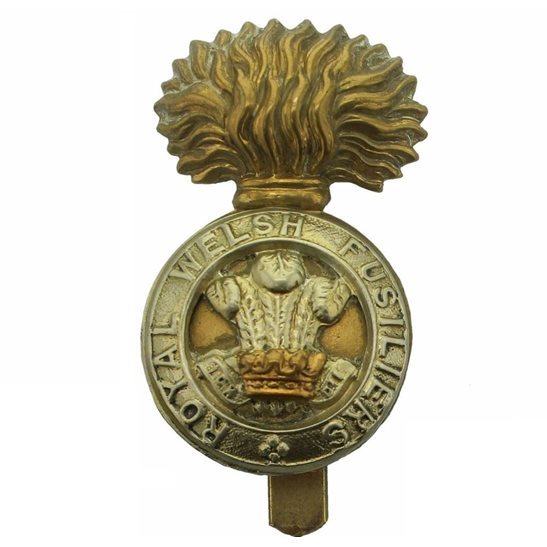Personal Details
Born: In October 1879 in Bronington, Flintshire, Wales and baptised 18 July 1880 in Bronington Parish Church.
Family: He was the son of William Downward, a labourer, and his wife Emma. He married Margaret Davies on 2 December 1903 in Wrexham, Denbighshire, Wales and together they had five children – James Archibald, Beatrice May, Maggie, Ernest and Nellie.
Residence: In 1881 he was living in Checkoe Road, Bronington; by 1891 he had moved to 4 Acton Terrace, Acton, Wrexham. By 1911 they had moved to 35 Farndon Street, Wrexham where he stayed until 1914. In 1915 his address was 23 Tuttle Street, Wrexham and by 1939 it was 12 Moorland Avenue, Wrexham.
Employment: In 1911 he was a bricklayer’s labourer; in 1939 he was a Corporation labourer.
Died: In April 1957, aged 78, and was buried in Brymbo, Wrexham on 29 May the same year.
Military Details
Regiment: Royal Welsh Fusiliers
Rank: Private
Service Number: 2698
Date of Enlistment: 28 June 1908
Date of Discharge: 22 December 1914
Reason for Discharge: No longer physically fit for war service
Other information: James had previously served with the Royal Welsh Fusiliers between 1898 and 1904, including serving in the Boer War.
James was awarded the Campaign Medals (British War Medal, and Victory Medal) and the Silver War Badge.

The 1914 Star (also known as 'Pip') was authorised under Special Army Order no. 350 in November 1917 and by an Admiralty Fleet Order in 1918, for award to officers and men of the British and Indian Expeditionary Forces who served in France or Belgium between 5 August and midnight of 22–23 November 1914. The former date is the day after Britain's declaration of war against the Central Powers, and the closing date marks the end of the First Battle of Ypres.
The 1914–15 Star (also known as 'Pip') was instituted in December 1918 and was awarded to officers and men of British and Imperial forces who served against the Central European Powers in any theatre of the Great War between 5 August 1914 and 31 December 1915. The period of eligibility was prior to the introduction of the Military Service Act 1916, which instituted conscription in Britain.
The British War Medal (also known as 'Squeak') was a silver or bronze medal awarded to officers and men of the British and Imperial Forces who either entered a theatre of war or entered service overseas between 5th August 1914 and 11th November 1918 inclusive. This was later extended to services in Russia, Siberia and some other areas in 1919 and 1920. Approximately 6.5 million British War Medals were issued. Approximately 6.4 million of these were the silver versions of this medal. Around 110,000 of a bronze version were issued mainly to Chinese, Maltese and Indian Labour Corps. The front (obv or obverse) of the medal depicts the head of George V. The recipient's service number, rank, name and unit was impressed on the rim.
The Allied Victory Medal (also known as 'Wilfred') was issued by each of the allies. It was decided that each of the allies should each issue their own bronze victory medal with a similar design, similar equivalent wording and identical ribbon. The British medal was designed by W. McMillan. The front depicts a winged classical figure representing victory. Approximately 5.7 million victory medals were issued. Interestingly, eligibility for this medal was more restrictive and not everyone who received the British War Medal ('Squeak') also received the Victory Medal ('Wilfred'). However, in general, all recipients of 'Wilfred' also received 'Squeak' and all recipients of The 1914 Star or The 1914/1915 Star (also known as 'Pip') also received both 'Squeak' and 'Wilfred'. The recipient's service number, rank, name and unit was impressed on the rim.

The Silver War Badge was issued in the United Kingdom and the British Empire to service personnel who had been honourably discharged due to wounds or sickness from military service in World War I. The badge, sometimes known as the "Discharge Badge", the "Wound Badge" or "Services Rendered Badge", was first issued in September 1916, along with an official certificate of entitlement.

